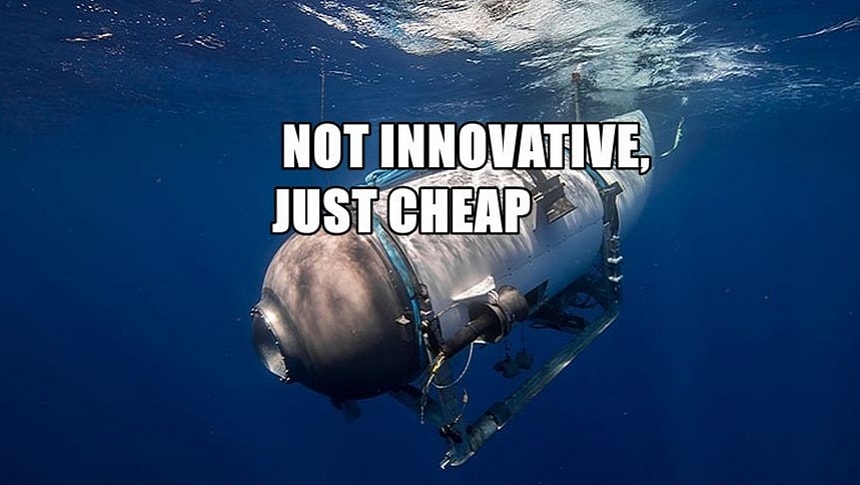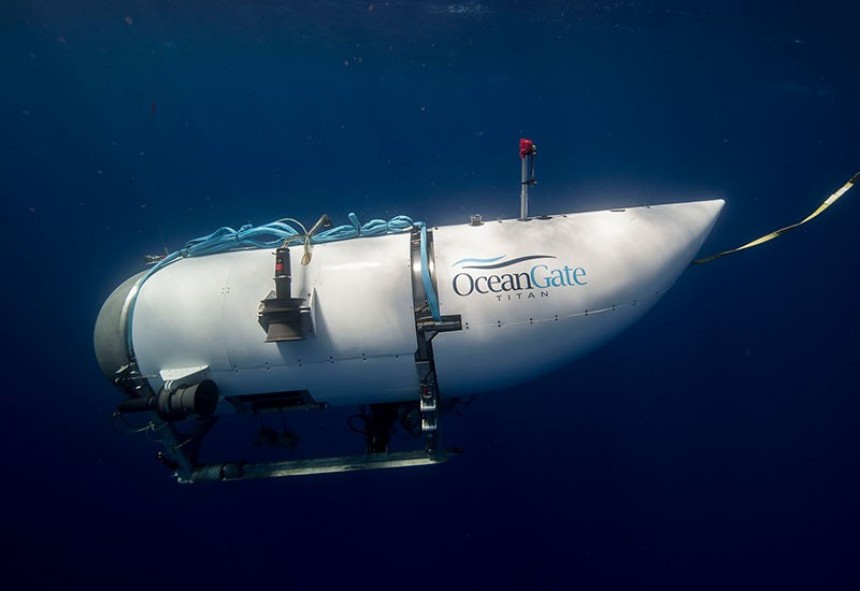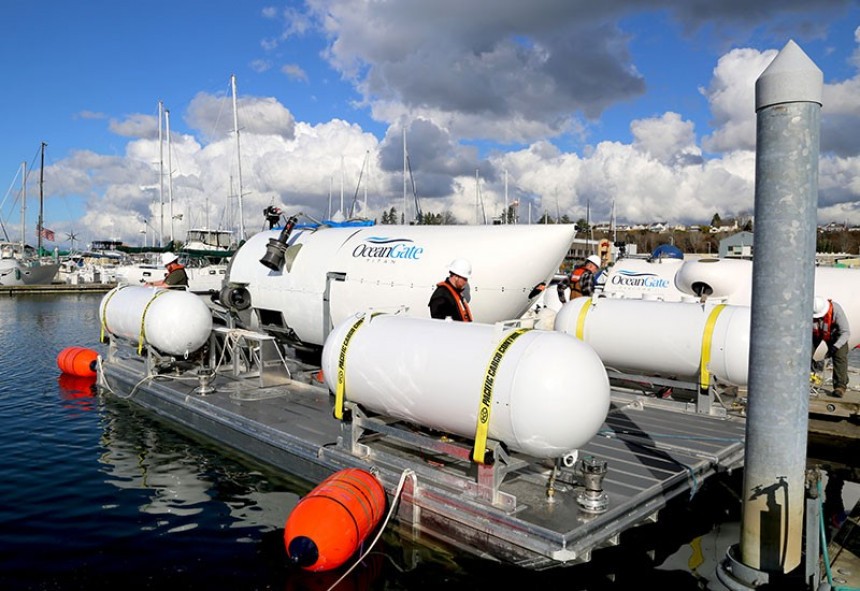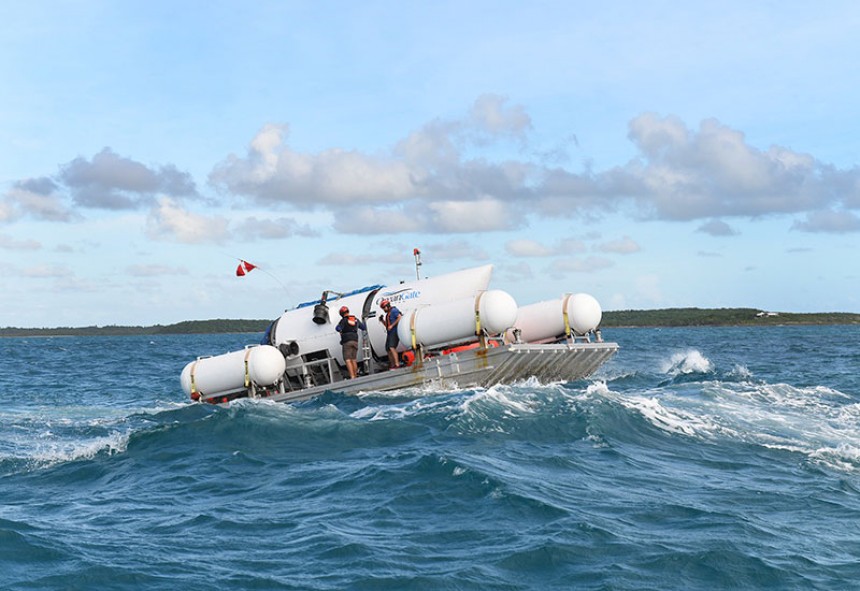There's much to be said about the merits of a daredevil, grab-the-bull-by-the-horns-and-life-by-the-cojones attitude. But when such an attitude comes at the expense of standard safety regulations and proper testing, it can only end in disaster. And a disaster is what the submersible Titan was.
On June 18, 2023, Titan imploded as it was making its first dive of the year to the famous wreck of the Titanic. Confirmation came following days of frantic searches, wild media speculation, and questions about the modus operandi of operator OceanGate Expeditions, which had also built the sub. It had been, until then, the world's largest deep-dive submersible, boasting the ability to carry a crew of five on what you might call tourist missions to the most famous wreck in the world.
Titan had been in the works for years before making its first successful manned dive to the Titanic in the summer of 2021. Onboard and acting as pilot was the OceanGate CEO Stockton Rush, a man who had more than once compared himself to Elon Musk – but a better Musk, because there's nothing on Mars where the real Musk is going, but there's lots to see and study at the bottom of the ocean.
Rush was also onboard the final fatal mission of the Titan, along with four other men: he was the operator, handling the now-infamous video game controller that served as a command center. The sub, which traveled "blind" and received guidance from a mothership at the surface to which it was tethered, lost contact with it one hour and 45 minutes into the dive.
Titan carried 96 hours' worth of oxygen onboard, but this was no failure of communication: the sub imploded as it neared the Titanic wreck, just like many experts had warned Rush it would. According to a new report, more tragic than the unnecessary death of five men was everything that happened during the development of Titan and the way Rush let his own ego blind him to the facts – and reason.
To transform Cyclops into Titan, Rush did involve engineers from NASA and Boeing in a first design stage, but not a single one of their contributions made it into the final version of the sub. That didn't stop Rush from claiming that it had been "built" by NASA and Boeing until his final hour, creating the impression that it had been engineered by the brightest minds out there.
Rush also claimed the University of Washington had been involved in the construction of the sub. Leaked documents confirm that this one is a slightly less misleading claim from the man who would build an entire business model out of lies.
The University of Washington ran tests on the Cyclops I prototype amounting to $650,000 out of a planned $5 million partnership. The partnership came to an end after the prototype imploded at 4,000 psi in the UW testing tank, still short of the 6,500 psi of pressure it would have had to take at Titanic depth.
It all went downhill from there, the same leaked documents obtained by Wired show. Rush wanted to have a sub that would be able to take 10,000 dives to the Titanic at an average of six dives per year and a rate of $105,000 per passenger. In a few years and with little expense on their own part, Rush imagined OceanGate would become the go-to company for billionaires, building underwater bunkers for a new generation of preppers and offering Titan copies as a form of public but luxury transport between these underwater vaults.
It was an incredible dream and one that Rush maybe actually believed in. But the reality is that he was trying to launch it with a Titan that was sub-par not just by industry standards (to which it wasn't subjected on considerations of money and time) but by common sense. It was a dream built on top of a mountain of lies and muffled criticism – because, according to the same leaks, as idealist as Rush was, he was equally quick in silencing all alarm calls and justified criticism.
His hubris led him to use experimental materials and combinations – like the carbon fiber hull with titanium rings and caps at each end – that he didn't test during the construction stage, let alone offer for independent tests. One former OceanGate employee says that, after the implosion of the prototype in the UW pressure tank, Rush ordered the construction of the full-size hull, even though he'd just been proven wrong in his assumptions that the sub could reach Titanic depth safely.
The first successful Titanic dive, which was an unmanned one in 2018, resulted in a cracked hull, which sent Rush scrambling to build another one so OceanGate would have something to launch people into by the next summer. The sub that should have been capable of doing some 10,000 dives was useless after less than 50 – only 3 of which had reached 4,000 meters (13,100 feet).
Not even that got Rush to listen to the voices that were telling him that carbon fiber, while exceptionally durable in certain conditions, wasn't reliable enough for the kind of pressure exercised at that depth, or that real-time monitoring and tests after each dive were mandatory. Instead, he had another hull built and then reused the titanium components from the old one, which, again, goes against industry standards because they were bonded together.
But carbon fiber was cheaper than titanium, and Rush was pressed for cash. It was also lighter, which meant cheaper transport costs.
That hull didn't even have half the performance score of its predecessor and it could be that Rush's decision to salvage the titanium played a part. Also did the fact that he had downgraded from grade 5 titanium to grade 3 to cut costs, and that he'd added metal lifting points to the interface rings to hoist the sub out of the water easily – without as much as a single test to see how that would impact the stability of the overall structure. Strapping it on a platform was costly and time-consuming.
On June 18, Rush unwillingly found out that cutting corners, cutting costs, and just "winging it" is not the way to go about in this industry. Sadly, so did four others with him.
"I have grown tired of industry players who try to use a safety argument to stop innovation and new entrants from entering their small existing market," Rush wrote to deep-sea explorer Rob McCallum, who had tried to argue with him the need for proper certification, which would have entailed thorough and expensive testing. "Since [starting] OceanGate we have heard the baseless cries of 'you are going to kill someone' way too often."
Rush didn't hear it enough, as this new report clearly shows.
A formal investigation into the Titan implosion is still underway. OceanGate suspended all activities in the days following the tragedy.
Titan had been in the works for years before making its first successful manned dive to the Titanic in the summer of 2021. Onboard and acting as pilot was the OceanGate CEO Stockton Rush, a man who had more than once compared himself to Elon Musk – but a better Musk, because there's nothing on Mars where the real Musk is going, but there's lots to see and study at the bottom of the ocean.
Rush was also onboard the final fatal mission of the Titan, along with four other men: he was the operator, handling the now-infamous video game controller that served as a command center. The sub, which traveled "blind" and received guidance from a mothership at the surface to which it was tethered, lost contact with it one hour and 45 minutes into the dive.
A dream built on lies
Titan started out as Cyclops, an existing sub that Rush bought through the OceanGate Expeditions startup, with the explicit goal of turning it into the vehicle for a new emerging class of explorers: billionaires with a taste for the underwater world, itching to have bragging rights over world firsts like the honor of being tourists to the wreck of the Titanic.To transform Cyclops into Titan, Rush did involve engineers from NASA and Boeing in a first design stage, but not a single one of their contributions made it into the final version of the sub. That didn't stop Rush from claiming that it had been "built" by NASA and Boeing until his final hour, creating the impression that it had been engineered by the brightest minds out there.
The University of Washington ran tests on the Cyclops I prototype amounting to $650,000 out of a planned $5 million partnership. The partnership came to an end after the prototype imploded at 4,000 psi in the UW testing tank, still short of the 6,500 psi of pressure it would have had to take at Titanic depth.
It all went downhill from there, the same leaked documents obtained by Wired show. Rush wanted to have a sub that would be able to take 10,000 dives to the Titanic at an average of six dives per year and a rate of $105,000 per passenger. In a few years and with little expense on their own part, Rush imagined OceanGate would become the go-to company for billionaires, building underwater bunkers for a new generation of preppers and offering Titan copies as a form of public but luxury transport between these underwater vaults.
Not innovation, but plain carelessness
In the aftermath of the June 18 implosion, it emerged that Rush masked carelessness with an innovative spirit that refused to submit to the whims of authority. He opted for the experimental route to cut costs and cut waiting times, and had his "explorers" sign waivers that mentioned at least a handful terrible ways of dying on just the first page of the NDA.His hubris led him to use experimental materials and combinations – like the carbon fiber hull with titanium rings and caps at each end – that he didn't test during the construction stage, let alone offer for independent tests. One former OceanGate employee says that, after the implosion of the prototype in the UW pressure tank, Rush ordered the construction of the full-size hull, even though he'd just been proven wrong in his assumptions that the sub could reach Titanic depth safely.
Not even that got Rush to listen to the voices that were telling him that carbon fiber, while exceptionally durable in certain conditions, wasn't reliable enough for the kind of pressure exercised at that depth, or that real-time monitoring and tests after each dive were mandatory. Instead, he had another hull built and then reused the titanium components from the old one, which, again, goes against industry standards because they were bonded together.
But carbon fiber was cheaper than titanium, and Rush was pressed for cash. It was also lighter, which meant cheaper transport costs.
On June 18, Rush unwillingly found out that cutting corners, cutting costs, and just "winging it" is not the way to go about in this industry. Sadly, so did four others with him.
"I have grown tired of industry players who try to use a safety argument to stop innovation and new entrants from entering their small existing market," Rush wrote to deep-sea explorer Rob McCallum, who had tried to argue with him the need for proper certification, which would have entailed thorough and expensive testing. "Since [starting] OceanGate we have heard the baseless cries of 'you are going to kill someone' way too often."
Rush didn't hear it enough, as this new report clearly shows.
A formal investigation into the Titan implosion is still underway. OceanGate suspended all activities in the days following the tragedy.


















